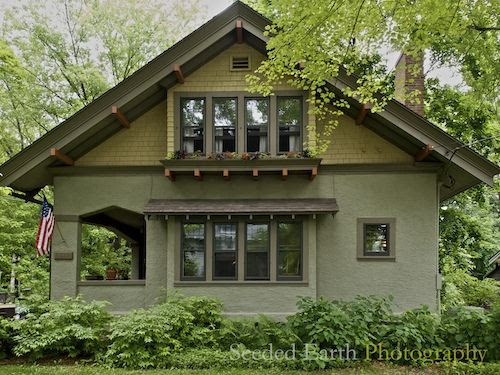Choosing an Exterior Trim Color
Although the trim color is typically the second main color on a house, it is often specified as an afterthought–“just white trim, please”. White trim, which became more popular in the 1920s (following darker trim tones in the earlier 1900s) can lend a crisp, traditional look to the home. When deciding to move away from “white” trim (and in that category, I’m including creamy whites), decisions need to be made about (i) how much, if any, and where, white should be used on the house–even when a different color is used for most of the trim, white often remains in varying degrees on railings, columns, eaves, and (ii) whether white trim should be substituted for another color like a light-medium green, tan, etc (which I’ll call “substitute white” here). A fully saturated look with darker trims and no white can also be beautiful. There are all many variations that have a big impact on the overall look of the home. Examples below (which include a mix of house styles) include classic white trim, variations on the amount of white trim with darker trims, “substitute white” trim and trims without light colors. It can be helpful to look at these photos to ensure that all elements of a house are being considered and to figure out the right color for each element to achieve the optimum look.
A few of the houses below are houses in my neighborhood so I can give close approximations on colors of the actual houses. However, with other houses, I’ve listed approximate colors based on the monitor (which in some cases, I know are not the colors of the actual houses…eg, based on reading the comments of the designer, Elise Moore, the first house below is a sage color, rather than a blue/green as shown on the monitor).
Classic Light Trim
First, below are examples of two foursquares with “white” trim (the more crisp/traditional Americana) look:
1.

Image Source
2.

Image Source
Limited White Trim
The next three examples show different options for the amount of white trim on the house while substituting color trim in other areas.
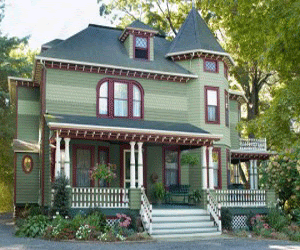

3. White sashes, columns, railings, eaves with dark trim, outline and accents around eaves:
4. Less white in this example…light columns, balusters, risers, outline trim on eaves. Dark window and outline trim, sashes, hand rails and detail on balusters:

Image Source
5. Very little white is used on the example below from Sherwin Williams’ American Heritage collection. White sashes and door (and furniture peaking through porch railings). Dark eaves, columns, trim, railing:
Image Source
“Substitute White”
The next examples use a “substitute white”–a color trim (light/medium green, tan) replaces white trim:
6. Light/medium green trim with wine sashes.
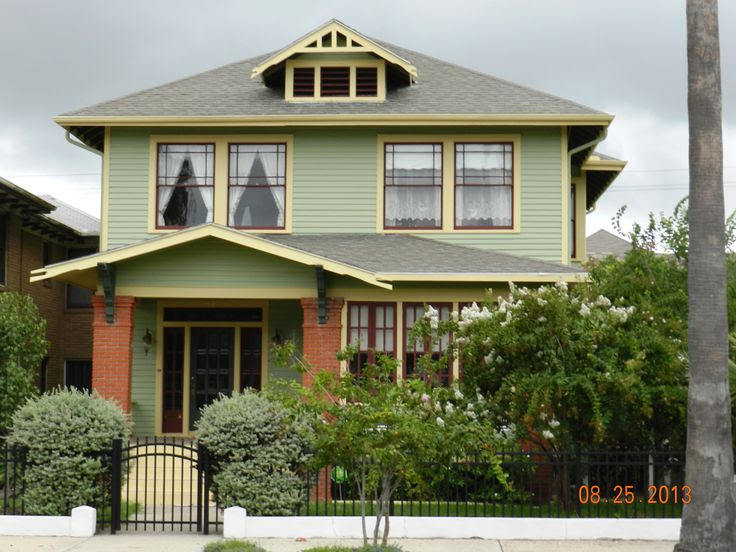
Image Source
7. Sandy tan trim with warm red sashes and doors
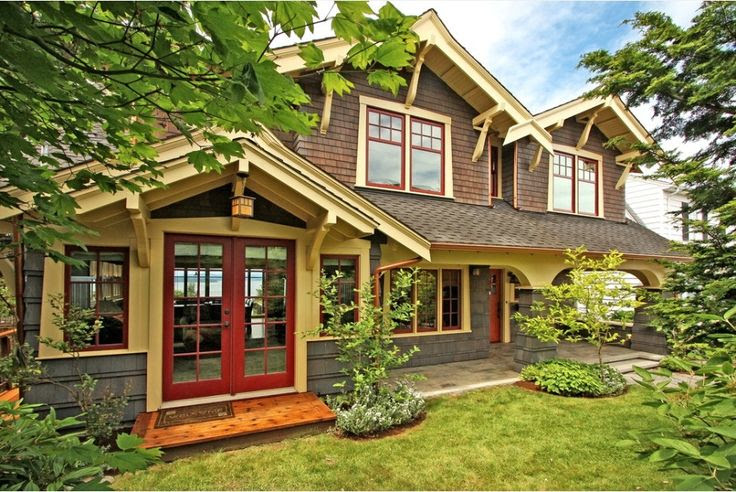
Image Source
8. This house is an example of both a “substitute white” on top and in the accents in the eaves while employing green for most of the trim.
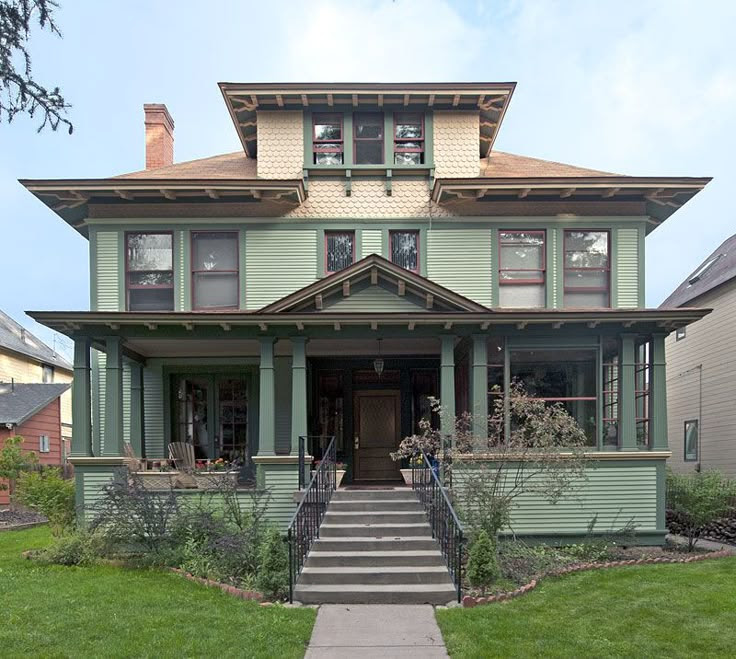
Image Source
9. This house uses a yellow rather than a white or creamy white as a “substitute white”
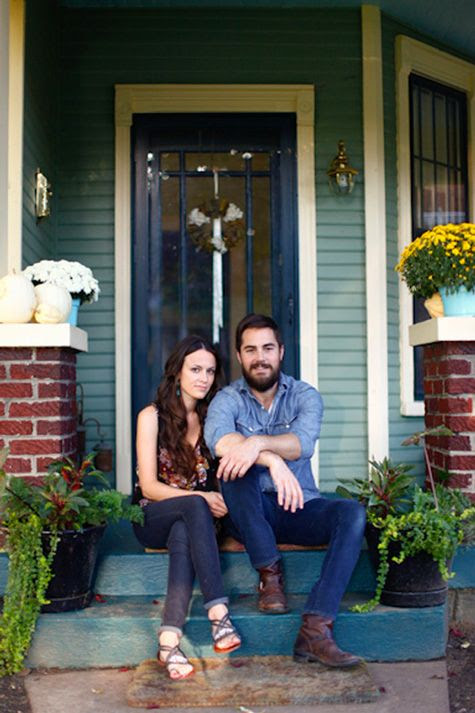
Image Source
10. Although the railings, columns and sashes read as white, they are light green and the remaining trim is comprised of several other greens:

Image Source
No Light Trim
The final examples use no light (white or “substitute white”) trim. These combinations frequently include green and red combinations:
11.
12.

Image Source
13.
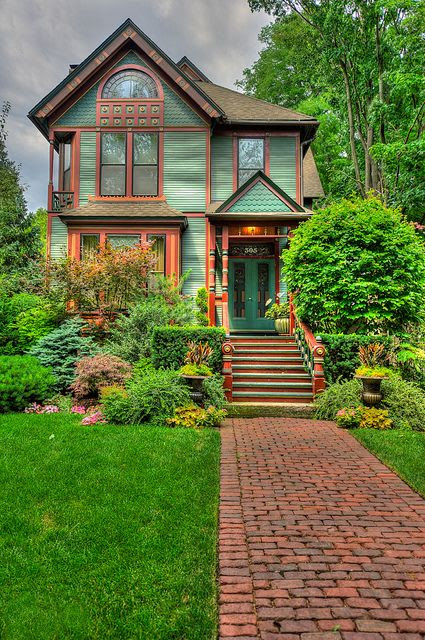
Image Source
14.
